Northern Ireland's changing murals
- Published
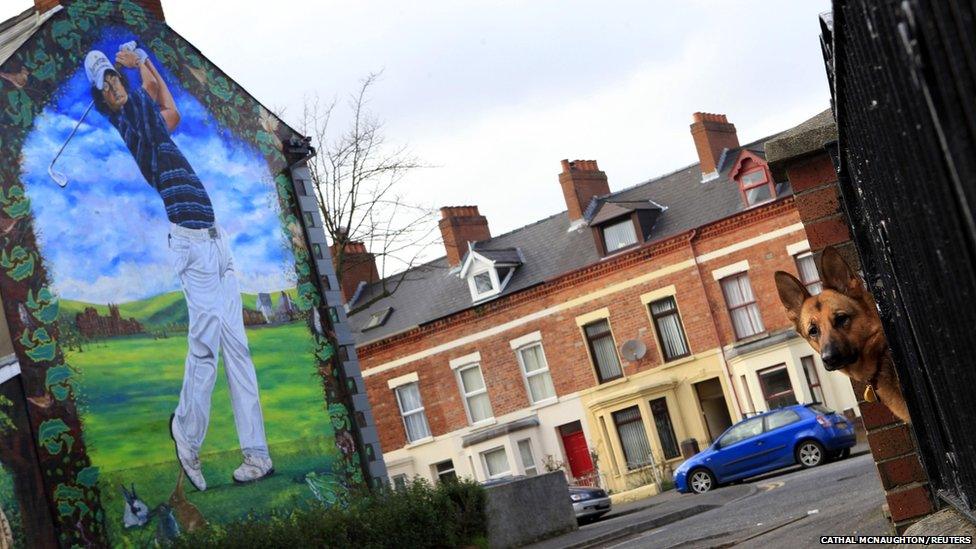
Murals have long been painted on the end of terraces in Northern Ireland. But the subjects of the paintings are changing. Here golfer Rory McIlroy is pictured on a wall in the Holylands area of Belfast.
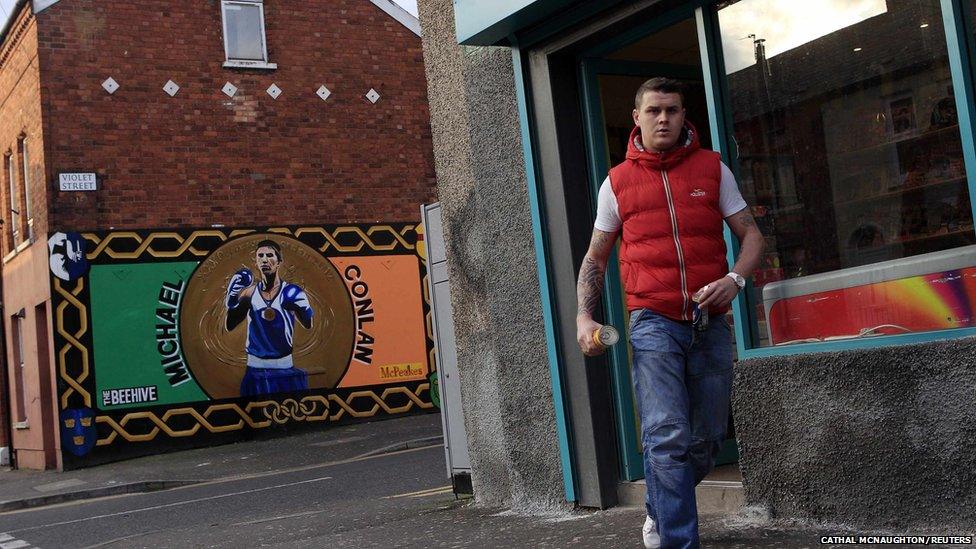
Another sporting achievement is recognised in the Falls Road area of west Belfast. This time it's Irish boxer Michael Conlan winning a bronze medal in the flyweight division at the 2012 Olympics.
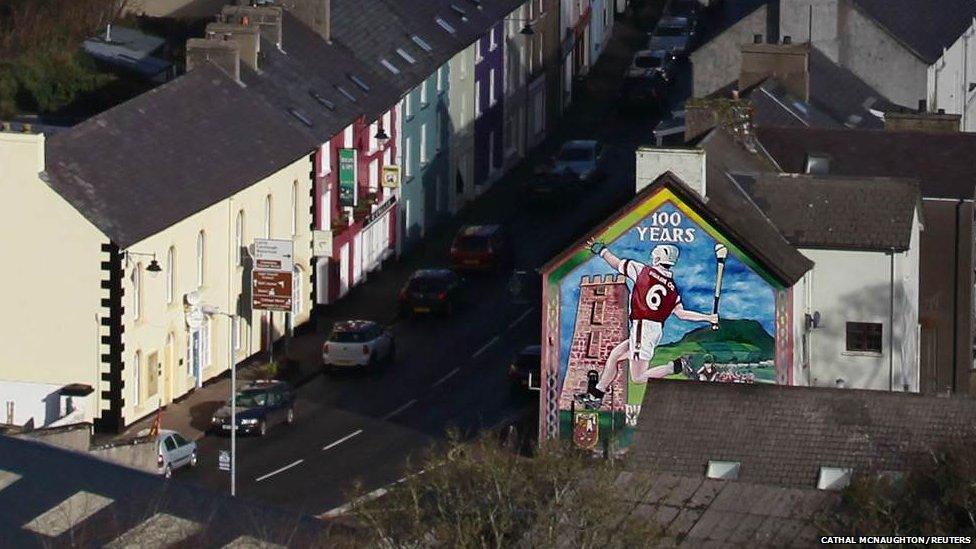
Sport is replacing traditional mural content again in the village of Cushendall in north Antrim, where they commemorate 100 years of the local Gaelic Athletic Club.
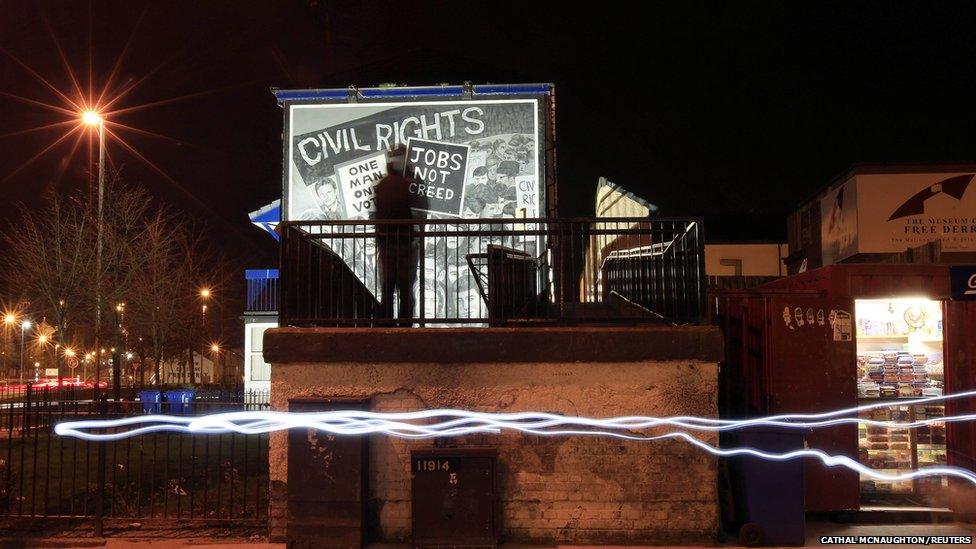
Historically murals have promoted either republican or loyalist political beliefs. A mural in the Bogside area of Londonderry commemorates the beginning of the drive in Derry for democratic rights.
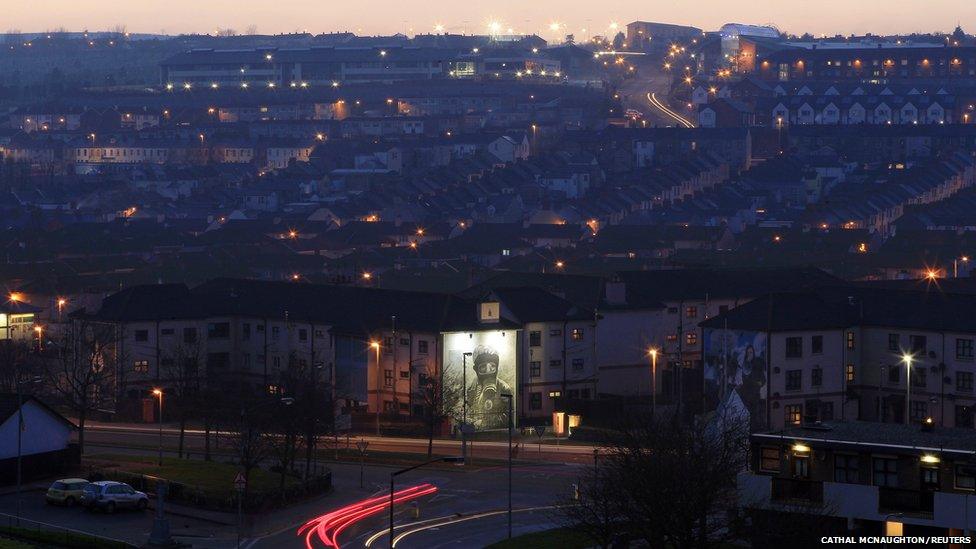
Murals such as this one in Derry, depicting a petrol bomber during the Battle of the Bogside in 1969, have become rarer.
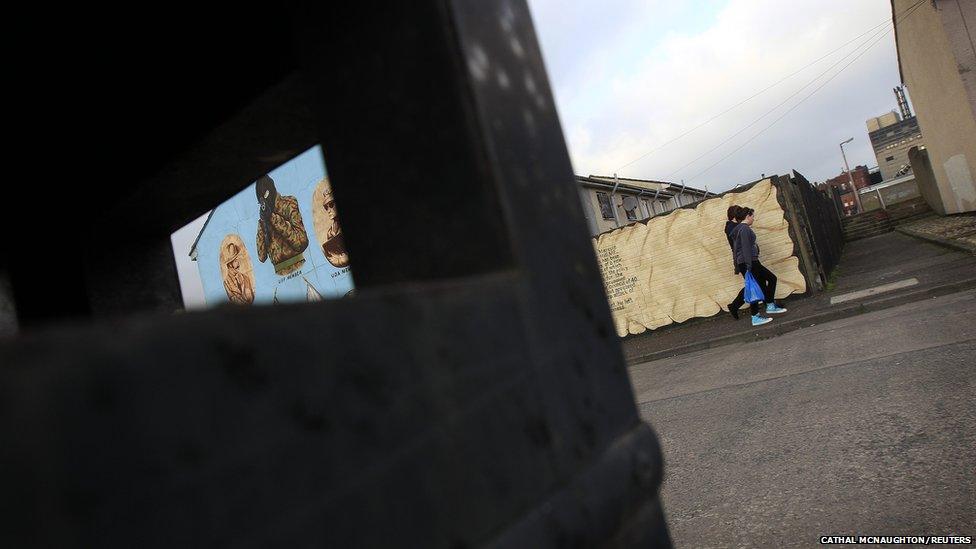
Since ceasefires in the 1990s, murals glorifying paramilitaries, like this in the Shankill Road area of west Belfast, are less prevalent.

Residents have been used to violent scenes painted at the end of their streets. A loyalist paramilitary mural is peeling off the wall in the Waterside area of Derry.
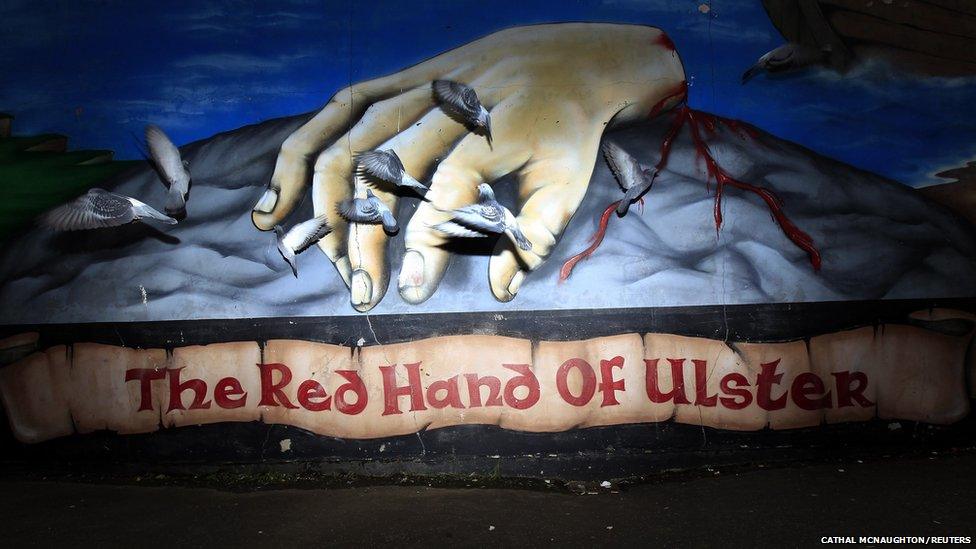
Photographer Cathal McNaughton tried to look at the murals through a stranger's eyes. He captured this one depicting a Gaelic myth about the claiming of Ulster in a different light.
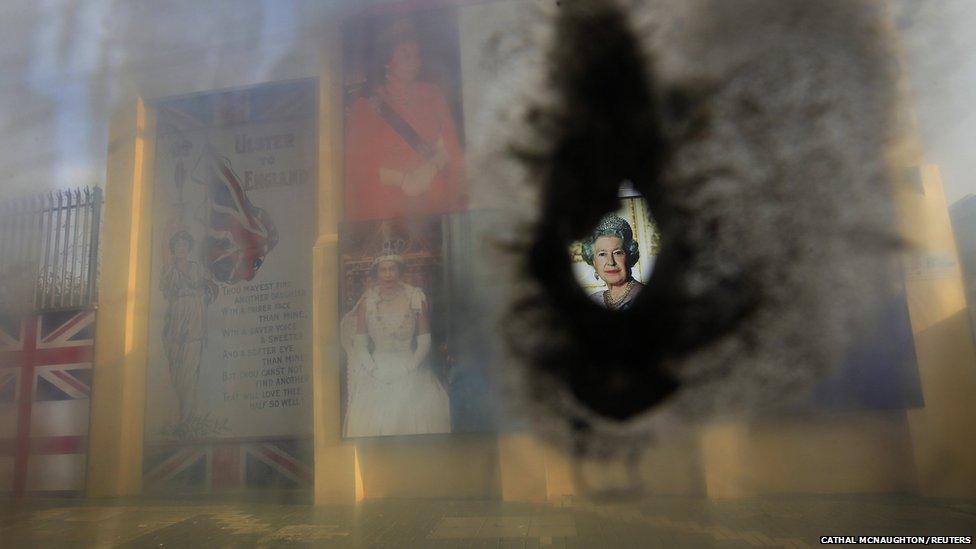
A mural on the Shankill Road shows tributes to Queen Elizabeth in west Belfast. "It would be nice to think that one day there will be no need to paint any more murals to commemorate new victims of Northern Ireland’s Troubles," says McNaughton.